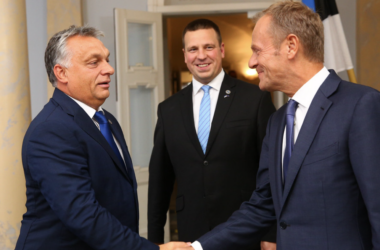The European Union is stepping up its military game, investing in research that could lead to the large-scale production of cheap kamikaze drones—an effort to reduce reliance on U.S. and Israeli suppliers.
Following Ukraine’s success using these drones against Russia, the European Commission’s newly unveiled 2025 defence programme calls for developing “drone-based affordable mass munitions.” The initiative aims to tap into the innovation of small and medium-sized companies, as well as startups, to push forward drone warfare technology.
Initially, Ukraine improvised by strapping explosives onto commercially available racing drones. Now, with a thriving drone industry producing about four million purpose-built military drones annually, the impact of these low-cost weapons is undeniable. Capable of reconnaissance and precise strikes up to 50-60km away, kamikaze drones have proven invaluable on the battlefield.
Europe’s Wake-Up Call
NATO Secretary-General Mark Rutte has repeatedly warned that Russia’s hybrid warfare tactics are ramping up, and Europe has only a few years to prepare for potential open conflict. Yet, Europe has historically underinvested in its defence industry, relying on foreign-made drones instead of developing its own.
The European Defence Fund (EDF), which pumps over €1 billion annually into military R&D, aims to change that. Covering 31 key areas of European defence, its latest programme signals a growing recognition that mass-producing homegrown drones could give the EU a much-needed strategic advantage.
Pushing for Military Autonomy
This new investment is part of a broader push to bolster Europe’s defence industry and achieve “strategic autonomy.” Another EDF-backed initiative calls for an AI-powered underwater surveillance network to counter Russian hybrid threats. This follows recent deployments of AI-driven monitoring systems by Nordic, Baltic, Dutch, and British forces in the Baltic Sea.
The 2025 programme will fund various new military capabilities but surprisingly leaves out air defence—despite its supposed priority for the European Commission and Poland’s leadership of the Council.
Among other projects in the pipeline:
- AI-powered battlefield triage systems to determine which wounded soldiers are worth saving based on their injuries.
- Research into a new satellite constellation to enhance space-based intelligence and surveillance, complementing existing high-end EU networks like Copernicus and IRIS2.
With geopolitical tensions rising, the EU’s defence strategy is shifting. Whether these investments will be enough to close the gap with global military powers remains to be seen—but at least Brussels is finally taking drone warfare seriously.




